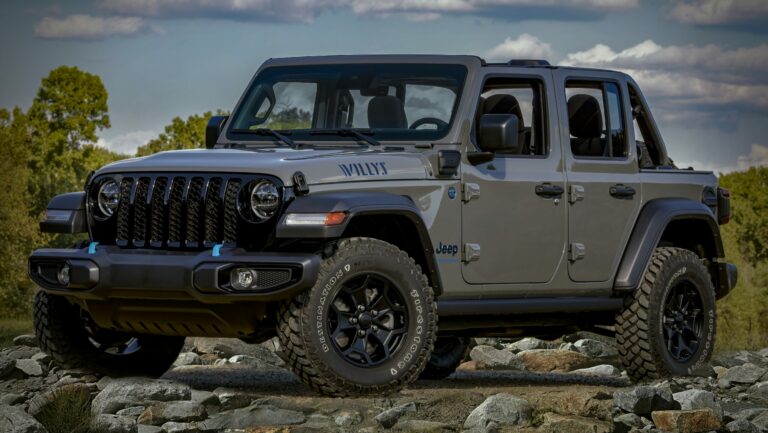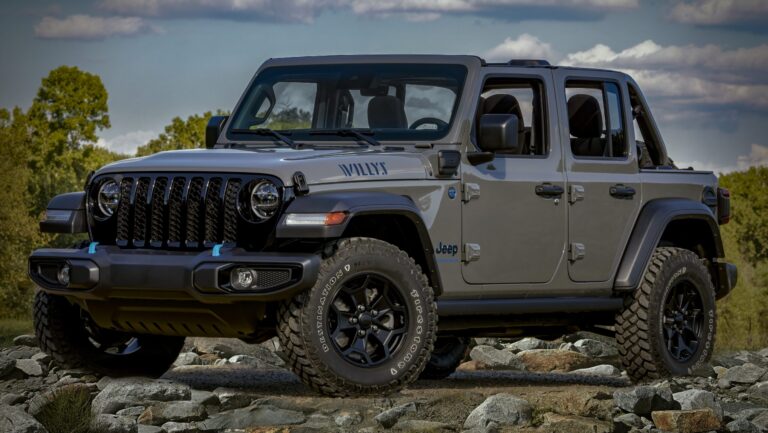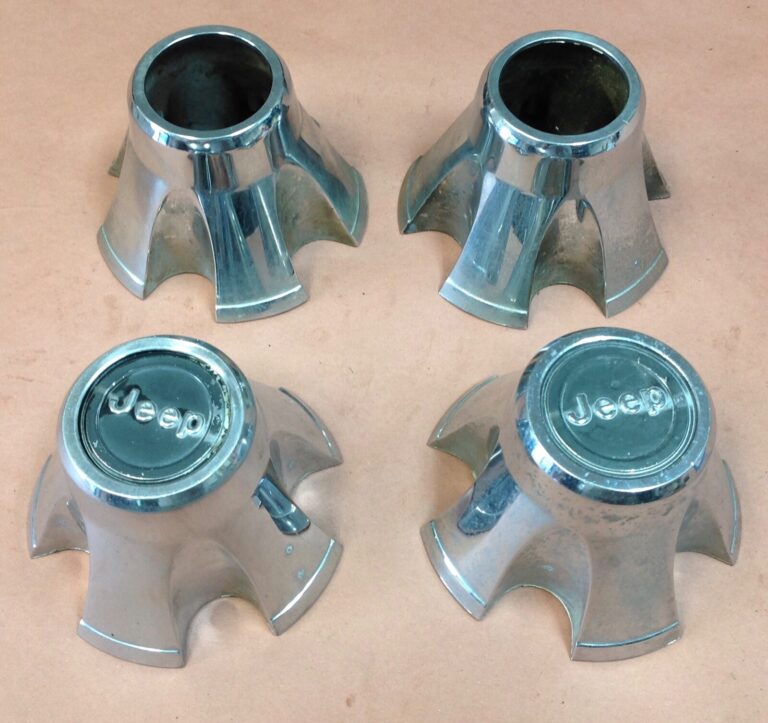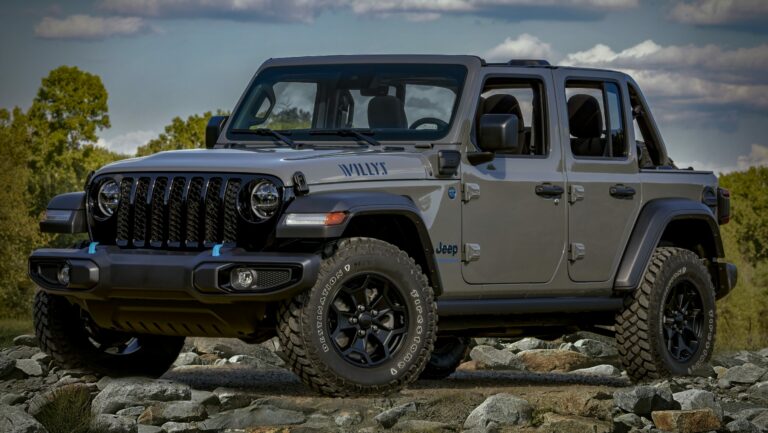Used 97 Jeep Wrangler For Sale: Your Definitive Guide to Buying an Off-Road Icon
Used 97 Jeep Wrangler For Sale: Your Definitive Guide to Buying an Off-Road Icon jeeps.truckstrend.com
The allure of a Jeep Wrangler is undeniable, a symbol of freedom, adventure, and rugged capability. Among its storied lineage, the 1997 Jeep Wrangler, marking the debut of the TJ generation, holds a particularly special place. It’s not just an old vehicle; it’s a modern classic, bridging the gap between the utilitarian YJ and the more refined later models, while introducing the revolutionary coil-spring suspension that transformed its ride quality and off-road prowess. For those seeking an authentic Jeep experience without the complexities of newer electronics or the harsh ride of older leaf-sprung models, a used 1997 Jeep Wrangler represents an exceptional opportunity.
This article serves as a comprehensive guide for anyone considering purchasing a used 97 Jeep Wrangler. We will delve into why this specific model year remains so desirable, what critical aspects to scrutinize during your search, how to conduct a thorough pre-purchase inspection, common issues to anticipate, and practical advice to ensure you make an informed and satisfying purchase. Prepare to embark on your journey to owning a piece of automotive history that promises countless adventures.
Used 97 Jeep Wrangler For Sale: Your Definitive Guide to Buying an Off-Road Icon
Why a 1997 Jeep Wrangler TJ? Understanding its Enduring Appeal
The 1997 model year ushered in the TJ generation, a pivotal moment in the Wrangler’s evolution. Prior models, like the YJ (1987-1995), were known for their rough, leaf-sprung ride. The TJ changed everything by adopting a coil-spring suspension system, a direct descendant of the highly capable Jeep Grand Cherokee (ZJ). This single modification dramatically improved both on-road comfort and off-road articulation, making the TJ a far more versatile and enjoyable vehicle to drive daily, while significantly enhancing its rock-crawling capabilities.
Beyond the suspension, the ’97 TJ retained the classic round headlights that many Jeep purists prefer over the YJ’s rectangular ones, blending iconic styling with modern improvements. Its compact wheelbase (93.4 inches for the standard two-door) makes it incredibly maneuverable on tight trails, yet spacious enough for two adults and gear. The TJ generation, particularly the early ’97 models, are celebrated for their mechanical simplicity, robust powertrain options, and a vast aftermarket support network, making them highly customizable and relatively easy to maintain for the DIY enthusiast. They embody the essence of what a Jeep should be: a capable, open-air vehicle ready for anything.
Key Aspects to Consider When Buying a Used ’97 Wrangler
Purchasing a vehicle that’s over two decades old requires careful consideration. Here are the crucial aspects to evaluate before committing to a 1997 Jeep Wrangler:
- Engine Options: The 2.5L I4 vs. The 4.0L I6:
- 2.5-liter Inline-4 (I4): This engine offers adequate power for daily driving and light off-roading, particularly with lower gearing. It’s known for its simplicity and fuel efficiency (relative to the 4.0L). However, it can feel underpowered, especially with larger tires or when loaded down.
- 4.0-liter Inline-6 (I6): This is the undisputed workhorse and the preferred engine for most enthusiasts. Known for its legendary reliability, strong low-end torque, and ample power, it’s ideal for off-roading, towing, and highway cruising. While less fuel-efficient, its durability and performance make it the more desirable choice. Inspect both for signs of oil leaks (especially the rear main seal), proper idle, and unusual noises.

- Transmission Choices:
- Manual (AX-15/NV3550): The 1997 model typically came with the Aisin AX-15 5-speed manual, a robust and popular transmission. Later TJs switched to the NV3550. Manuals offer better control off-road and can be more engaging to drive. Check for smooth shifts, clutch engagement, and any grinding.
- Automatic (32RH): The 3-speed automatic is a durable unit, though it lacks the efficiency and gear ratios of modern automatics. It’s convenient for stop-and-go traffic and can be good for rock crawling due to its simplicity. Test for smooth shifts and proper engagement in all gears.

- Axles: Dana 30 Front, Dana 35 Rear (or Dana 44):
- Most ’97 Wranglers came with a Dana 30 front axle and a Dana 35 rear axle. The Dana 35 is known to be weaker, especially with larger tires or aggressive off-roading, and can be a point of failure.
- Some Sport, Sahara, or special edition models might have come with an optional, stronger Dana 44 rear axle, which is highly desirable. Inspect for leaks, bent tubes, and excessive play in the driveshafts.
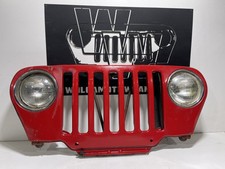
- Soft Top vs. Hard Top:
- Soft Top: Offers the ultimate open-air experience but can be noisy, less secure, and prone to wear (tears, cloudy windows). Check its condition thoroughly.
- Hard Top: Provides better insulation, security, and quieter ride. They are heavy and require storage when removed. Ensure all mounting points are intact. Many Wranglers come with both, which is a bonus.
- Rust: The TJ’s Arch-Nemesis: This is arguably the most critical inspection point. TJs are notorious for frame rust, especially in regions that use road salt.
- Frame Rust: Pay meticulous attention to the frame rails, particularly near the skid plate mounting points, control arm mounts, and around the rear crossmember. Look for flaking, bubbling, or perforations. Significant frame rust is a deal-breaker unless you’re prepared for costly and extensive repair.
- Body Rust: Check the rocker panels, wheel wells, floorboards (under the carpet), and around the windshield frame. Surface rust is common, but through-rust indicates deeper issues.
- Maintenance History and Modifications: A well-documented service history is invaluable. Look for evidence of regular oil changes, fluid flushes, and major component replacements (e.g., water pump, radiator, brakes). Be wary of poorly executed modifications (e.g., cheap lift kits, shoddy wiring, oversized tires without proper gearing or steering upgrades) as they can lead to significant problems down the line. Good quality, professionally installed modifications can add value.
The Pre-Purchase Inspection Checklist for a ’97 TJ
A thorough inspection is non-negotiable. If you’re not mechanically inclined, hire a trusted mechanic specializing in 4x4s to perform a pre-purchase inspection (PPI).
- Visual Inspection (Exterior & Interior):
- Exterior: Look for body damage, misaligned panels (indicating an accident), paint fade, and signs of rust (as detailed above). Check tire condition, tread depth, and uneven wear (can indicate suspension/alignment issues).
- Interior: Check seats for rips/tears, dashboard for cracks, and all electronics (radio, HVAC, windows, wipers, lights, gauges) for functionality. Lift the carpets to inspect floorboards for rust or water damage.
- Underbody & Frame Inspection:
- Get the Jeep on a lift or use jack stands. This is where you’ll find the most critical issues.
- Frame: Systematically tap the frame with a small hammer or prod with a screwdriver, especially around suspension mounts, skid plates, and the rear. Listen for solid thuds, not hollow sounds or crunching. Look for patches that might hide rust.
- Suspension: Inspect all control arms, bushings, shock absorbers, and coil springs for damage, leaks, or excessive wear. Check the track bar for play.
- Steering: Look for loose tie rod ends, ball joints, and a leaking power steering box. Excessive play in the steering wheel indicates worn components.
- Drivetrain: Check for fluid leaks from the engine, transmission, transfer case, and differentials. Inspect driveshafts for dents or torn boots.
- Exhaust: Look for rust, holes, or poorly done repairs.
- Engine Bay Inspection:
- Check all fluid levels (oil, coolant, brake fluid, power steering). Look for signs of leaks.
- Inspect belts and hoses for cracks or wear.
- Check battery terminals for corrosion.
- Look for any modifications and assess their quality.
- Start the engine cold and listen for abnormal noises (knocking, ticking, squealing).
- Test Drive:
- Engine & Transmission: Listen for smooth idling, acceleration, and shifting. Test both 2WD and 4WD (high and low range).
- Brakes: Check for pulsing, pulling, or spongy pedal feel.
- Steering: Test for excessive play, vagueness, or "Death Wobble" (violent shaking of the front end at certain speeds).
- Suspension: Drive over bumps to check for clunks, rattles, or excessive bouncing.
- HVAC: Ensure both heating and air conditioning work effectively.
- Gauges: Confirm all gauges (oil pressure, temperature, fuel, speedometer) are working correctly.
- Documentation: Verify the VIN on the vehicle matches the title. Ask for service records, accident history (CarFax/AutoCheck), and any receipts for parts or modifications.
Common Issues and Solutions for 1997 Jeep Wranglers
Even a well-maintained ’97 TJ might exhibit some common age-related issues. Knowing these can help you budget for potential repairs.
- Rust (Again!): As discussed, this is paramount. Solutions range from frame repair kits for minor spots to professional welding for more severe damage. Prevention (undercoating, regular washing) is key once you own it.
- "Death Wobble": A frightening, violent oscillation of the front end, usually at highway speeds. It’s not exclusive to Jeeps but TJs are prone. Caused by worn steering components (tie rod ends, drag link, ball joints), a loose track bar, or improper alignment. Solutions involve diagnosing and replacing the worn parts, often starting with the track bar and steering stabilizer.
- Oil Leaks: The 4.0L is famous for minor oil leaks, particularly from the rear main seal (RMS) and valve cover gasket. While common, excessive leaks need attention.
- Cooling System Issues: Overheating can be caused by a failing water pump, clogged radiator, or faulty thermostat. Check coolant color and level.
- Electrical Gremlins: Intermittent dash lights, non-functioning gauges, or HVAC fan speed resistor failures are not uncommon. These are often fixable with patience and basic electrical troubleshooting.
- Soft Top Wear: Sun exposure and age lead to tears, cloudy windows, and failing zippers. Replacements are readily available but can be an added cost.
Maximizing Value: Tips for Negotiation and Purchase
- Research Market Value: Use online classifieds (Facebook Marketplace, Craigslist, dedicated Jeep forums, auto sites) to get a sense of fair prices for similar TJs in your area, factoring in condition, mileage, and options.
- Be Prepared to Walk Away: Don’t get emotionally attached. If a Jeep has too many red flags or the seller is unwilling to negotiate fairly, move on.
- Leverage Inspection Findings: Use any identified issues (rust, worn components, needed repairs) as negotiation points to lower the asking price. Get quotes for repairs to support your offer.
- Factor in Immediate Costs: Budget for potential immediate repairs, fluids, and necessary upgrades (like new tires if needed) after purchase.
- Private Seller vs. Dealership: Private sellers often offer better prices but "as-is" sales. Dealerships might offer warranties (unlikely for a ’97) but typically have higher prices and less room for negotiation.
Price Table: Estimated Values for Used 1997 Jeep Wrangler
Please note that these are estimates and actual prices can vary wildly based on geographical location, specific modifications, seller urgency, and the Jeep’s overall history. Rust-free examples in desirable areas command premium prices.
| Condition | Engine | Mileage | Top Type | Estimated Price Range (USD) | Notes |
|---|---|---|---|---|---|
| Poor | 2.5L / 4.0L | High (>150k) | Any | $3,000 – $6,000 | Significant frame/body rust, major mechanical issues, requires substantial work/restoration. |
| Fair | 2.5L | Med (100k-150k) | Soft | $6,000 – $9,000 | Moderate rust, some mechanical issues, decent driver with some TLC needed. |
| Fair | 4.0L | Med (100k-150k) | Soft/Hard | $7,000 – $11,000 | Moderate rust, some mechanical issues, good daily driver candidate. |
| Good | 2.5L | Low (<100k) | Soft/Hard | $9,000 – $12,000 | Minor surface rust, well-maintained, good running condition, ready for adventure. |
| Good | 4.0L | Low (<100k) | Soft/Hard | $10,000 – $15,000 | Minor surface rust, strong engine, well-maintained, highly desirable. |
| Excellent | 4.0L | Very Low (<75k) | Hard | $15,000 – $25,000+ | Minimal to no rust, meticulously maintained, rare "survivor" or lightly restored. |
| Highly Modified | 4.0L | Varies | Any | $10,000 – $20,000+ | Price highly dependent on the quality and type of modifications. Can be higher or lower. |
Disclaimer: These prices are estimates only and are subject to market fluctuations, regional differences, and the specific condition and features of the individual vehicle.
Frequently Asked Questions (FAQ) about Buying a Used 1997 Jeep Wrangler
Q: Is a 1997 Wrangler a good first Jeep?
A: Yes, absolutely! The 1997 TJ is an excellent first Jeep. Its mechanical simplicity, robust design, and vast aftermarket support make it relatively easy to maintain, modify, and learn on.
Q: What’s the main difference between a ’97 TJ and older YJ models?
A: The most significant difference is the suspension. The ’97 TJ introduced coil springs at all four corners, providing a much smoother ride and superior off-road articulation compared to the YJ’s leaf springs. The TJ also brought back the classic round headlights.
Q: Which engine is better, the 2.5L or 4.0L?
A: For most buyers, the 4.0L inline-six is highly recommended due to its superior power, torque, and legendary reliability, especially if you plan on running larger tires or tackling challenging trails. The 2.5L is adequate for lighter duty and offers slightly better fuel economy.
Q: How much rust is too much on a ’97 TJ?
A: Any significant frame rust (flaking, bubbling, or perforations that compromise structural integrity, especially around suspension mounting points) should be a major red flag. Surface rust on the body is often manageable, but through-rust on critical areas like floorboards or rocker panels requires more extensive repair. When in doubt, walk away or consult a body shop for repair estimates.
Q: What is "Death Wobble" and how do I fix it?
A: "Death Wobble" is a severe, violent shaking of the front end, typically experienced at highway speeds. It’s caused by worn or loose front suspension and steering components (e.g., track bar, tie rod ends, ball joints, steering stabilizer). Fixing it involves diagnosing and replacing the worn parts, often starting with the track bar and steering stabilizer, followed by an alignment.
Q: Can I daily drive a ’97 Wrangler?
A: Yes, many people daily drive their ’97 TJs. While not as refined or fuel-efficient as modern vehicles, the coil-spring suspension makes it much more comfortable than older Wranglers. Be prepared for a louder, more utilitarian ride, and understand that a 25-year-old vehicle will require consistent maintenance.
Q: Are parts readily available for a ’97 TJ?
A: Absolutely. The TJ generation, especially the 4.0L engine, benefits from excellent parts availability. Both OEM and a massive array of aftermarket parts are widely available, making repairs and modifications relatively straightforward.
Conclusion
The 1997 Jeep Wrangler TJ holds a special place in the hearts of off-road enthusiasts and casual drivers alike. Its blend of classic Jeep aesthetics, robust mechanicals, and the game-changing coil-spring suspension makes it an incredibly capable and enjoyable vehicle. While purchasing a 25-year-old vehicle comes with its unique set of challenges, particularly the ever-present threat of rust, a diligent and informed approach can lead to a rewarding ownership experience.
By understanding the ’97 TJ’s strengths, knowing what to inspect meticulously, and budgeting for potential maintenance, you can confidently navigate the market for a used 97 Jeep Wrangler. When you find the right one, you’re not just buying a vehicle; you’re investing in an iconic piece of American automotive heritage, ready to carry you on countless adventures, open-air freedom, and unforgettable memories. Happy hunting, and may your journey into Jeep ownership be as exciting as the trails you’re destined to conquer.

